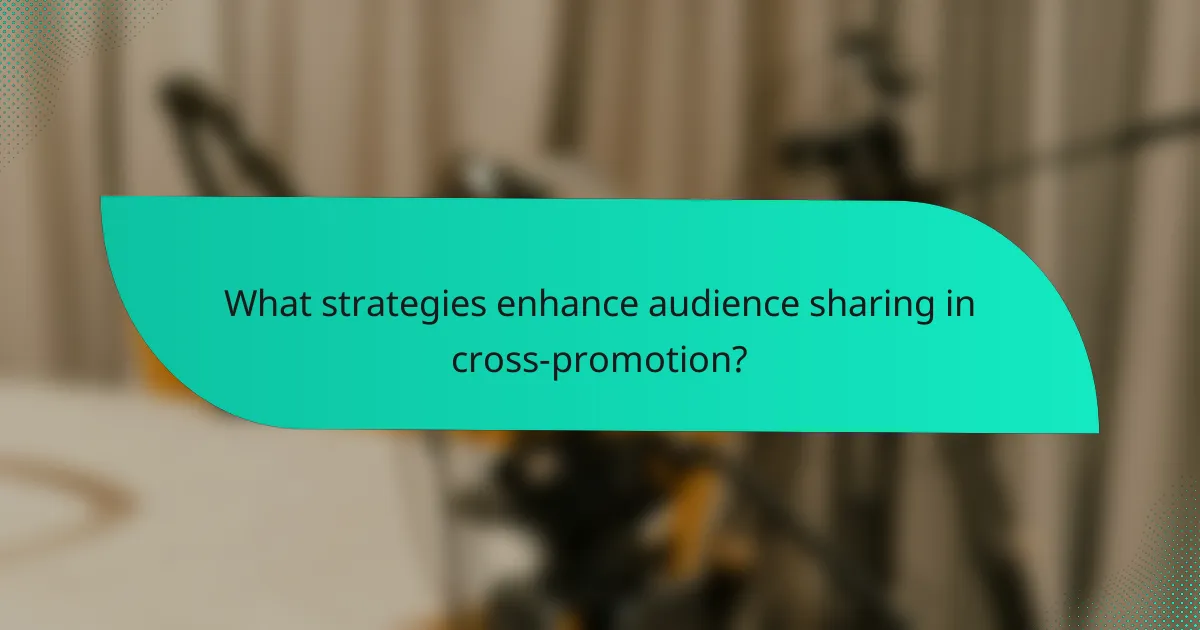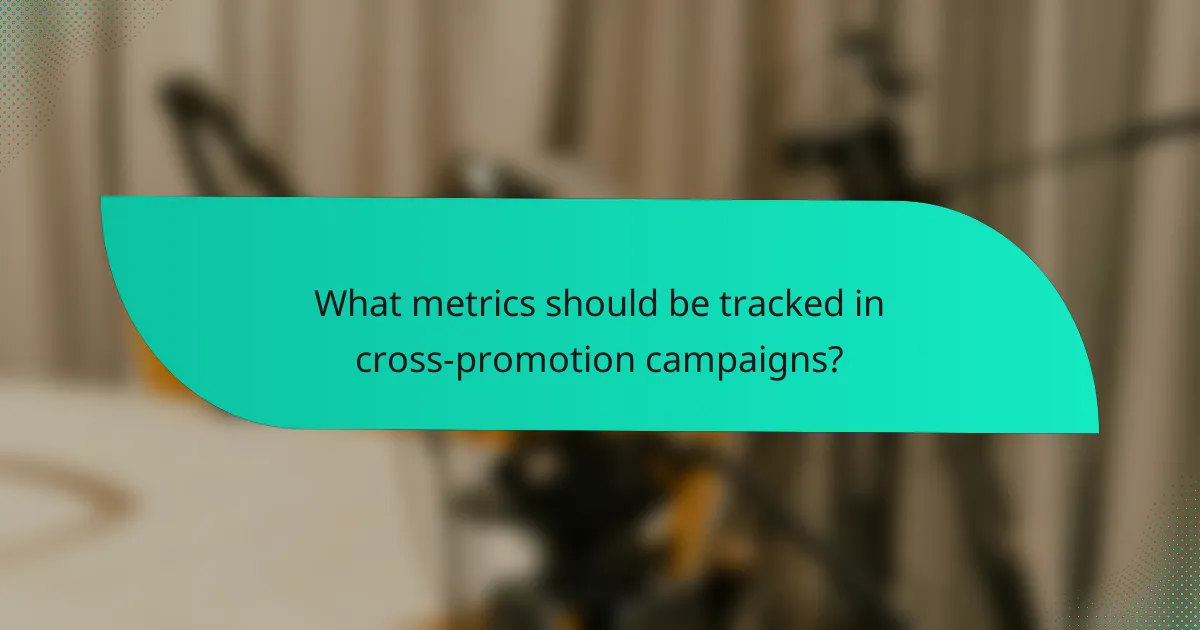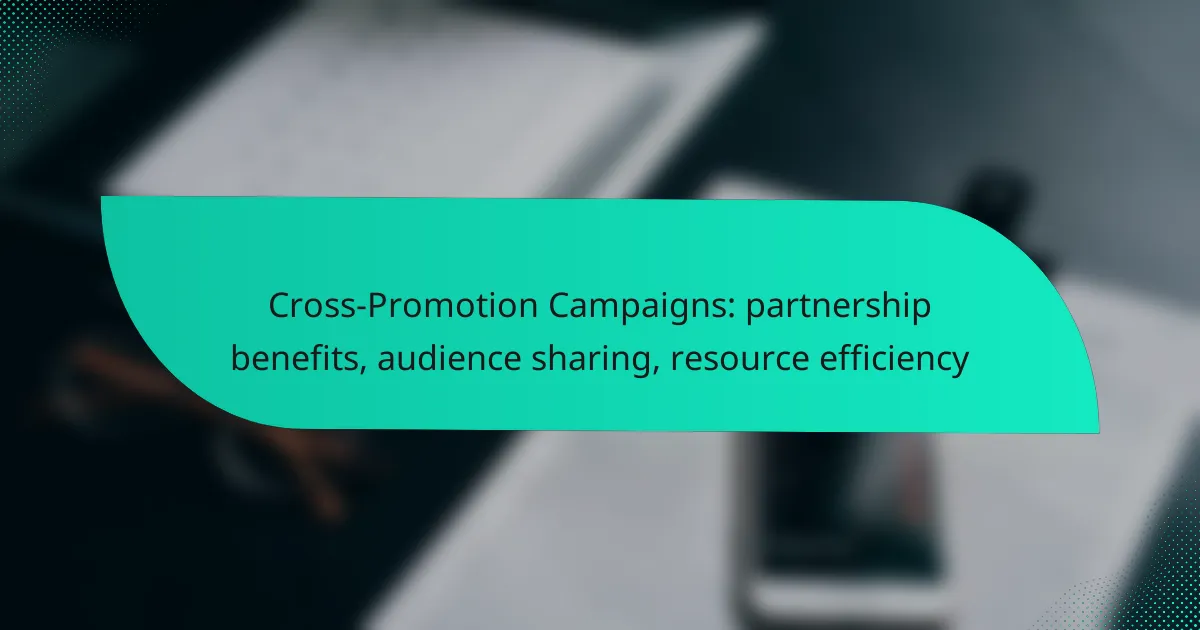Cross-promotion campaigns offer a strategic advantage by enabling businesses to collaborate, share audiences, and enhance brand visibility. By pooling resources, these partnerships not only broaden reach but also improve marketing efficiency, allowing for more impactful advertising efforts. Effective strategies such as joint content creation and co-hosted events can further maximize engagement and audience sharing.

How can cross-promotion campaigns benefit display advertising in the UK?
Cross-promotion campaigns can significantly enhance display advertising in the UK by leveraging partnerships to increase brand exposure and share audiences. These campaigns allow businesses to pool resources, reach wider demographics, and improve overall marketing efficiency.
Increased brand visibility
Cross-promotion campaigns boost brand visibility by combining marketing efforts with partners who have complementary products or services. This collaboration allows brands to appear in each other’s advertising spaces, thereby reaching a larger audience without the need for extensive individual campaigns.
For example, a fitness apparel brand partnering with a local gym can feature ads in the gym’s newsletters and social media, increasing visibility among fitness enthusiasts who are likely to be interested in their products.
Access to new audiences
By engaging in cross-promotion, brands can tap into their partners’ established customer bases, gaining access to new audiences that may not have been reached otherwise. This is particularly beneficial for smaller businesses looking to expand their market presence.
For instance, a skincare brand collaborating with a beauty influencer can introduce its products to the influencer’s followers, who may be interested in skincare solutions but are unfamiliar with the brand.
Cost-effective marketing
Cross-promotion is a cost-effective marketing strategy as it allows brands to share advertising costs and resources. This collaboration can lead to lower expenses for both parties compared to running separate campaigns.
Brands can negotiate shared costs for display ads, social media promotions, or email marketing, making it a financially viable option for companies with limited budgets.
Enhanced credibility
Partnering with established brands can enhance a company’s credibility in the eyes of potential customers. When a reputable brand endorses another, it can lead to increased trust and perceived value.
For example, if a new tech startup collaborates with a well-known tech company for a promotional campaign, the startup can benefit from the established trust associated with the larger brand.
Improved engagement rates
Cross-promotion can lead to improved engagement rates as audiences are more likely to interact with content that features brands they already know and trust. This familiarity can drive higher click-through rates and conversions.
For instance, a travel agency promoting a local hotel through its website can see increased bookings as customers feel more confident choosing a hotel that is recommended by a trusted travel source.

What strategies enhance audience sharing in cross-promotion?
Effective strategies for enhancing audience sharing in cross-promotion include collaborative content creation, joint social media campaigns, co-hosted events, and shared email marketing. These approaches leverage the strengths of both partners to reach wider audiences and maximize engagement.
Collaborative content creation
Collaborative content creation involves both partners working together to produce valuable material, such as blog posts, videos, or podcasts. This not only combines expertise but also exposes each partner’s audience to the other’s brand, fostering deeper connections.
When engaging in collaborative content, consider aligning your messaging and branding to ensure consistency. For instance, a fitness brand and a nutritionist could create a series of videos on healthy meal prep, benefiting from each other’s audience insights.
Joint social media campaigns
Joint social media campaigns allow partners to share content across their platforms, amplifying reach and engagement. By co-creating posts or hosting giveaways, both brands can attract new followers and encourage interaction.
It’s crucial to coordinate the timing and messaging of these campaigns. For example, a clothing retailer and a fashion influencer could run a campaign featuring a new collection, using specific hashtags to track engagement and reach across both audiences.
Co-hosted events
Co-hosted events, whether online or in-person, provide an opportunity for both brands to engage directly with their audiences. These events can include webinars, workshops, or networking sessions that highlight the strengths of both partners.
When planning an event, ensure that the topics resonate with both audiences. For instance, a tech company and a digital marketing agency could host a seminar on the latest trends in technology and marketing, drawing attendees from both fields.
Shared email marketing
Shared email marketing involves both partners promoting each other’s products or services through their email lists. This strategy can effectively increase visibility and drive conversions by reaching a wider audience without significant additional costs.
To implement this, create a joint email campaign that highlights special offers or relevant content from both partners. Ensure that the messaging aligns with your brand voice and is valuable to your subscribers, such as offering exclusive discounts or informative resources.

How to ensure resource efficiency in cross-promotion?
To ensure resource efficiency in cross-promotion, focus on maximizing the use of shared assets and tools between partners. This approach minimizes costs and enhances the effectiveness of marketing efforts by leveraging existing resources and data.
Leveraging existing assets
Utilizing existing assets such as marketing materials, social media channels, and customer databases can significantly reduce costs in cross-promotion. For instance, if one partner has a well-established email list, they can share promotional content with their audience on behalf of both brands.
Consider creating co-branded content that highlights both partners’ strengths. This not only saves time and money but also provides a unified message that resonates with both audiences.
Utilizing shared analytics tools
Shared analytics tools allow partners to track the performance of their cross-promotion efforts in real-time. By using platforms like Google Analytics or social media insights, both parties can assess engagement and conversion rates effectively.
Establish clear metrics for success before launching the campaign. This could include tracking website traffic increases, social media engagement rates, or sales conversions, ensuring both partners are aligned on goals and expectations.
Streamlining communication channels
Effective communication is crucial for resource efficiency in cross-promotion. Establishing dedicated channels, such as a shared project management tool or regular check-in meetings, can help keep both teams aligned and informed.
Avoid common pitfalls by setting clear roles and responsibilities for each partner. This clarity reduces confusion and ensures that all tasks are completed efficiently, ultimately leading to a more successful campaign.

What are the prerequisites for successful cross-promotion campaigns?
Successful cross-promotion campaigns require careful planning and alignment between the partnering brands. Key prerequisites include shared values, complementary audiences, and well-defined objectives to ensure both parties benefit effectively.
Aligned brand values
For a cross-promotion to succeed, the brands involved must share similar values and missions. This alignment fosters trust and authenticity, making it easier for audiences to engage with the campaign. For example, a sustainable clothing brand partnering with an eco-friendly beauty line can resonate well with consumers who prioritize environmental responsibility.
When selecting a partner, evaluate their brand reputation and messaging to ensure consistency. Mismatched values can lead to confusion and may alienate your audience, so thorough research is essential.
Complementary target audiences
Identifying complementary target audiences is crucial for maximizing reach and engagement in cross-promotion. Each brand should appeal to a similar demographic or psychographic profile, allowing for effective audience sharing. For instance, a fitness app and a healthy meal delivery service can target health-conscious individuals, enhancing the campaign’s relevance.
Analyze your audience data to find overlaps and ensure both brands can benefit from the collaboration. Tools like social media insights and customer surveys can help identify shared interests and behaviors.
Clear campaign objectives
Establishing clear objectives is vital for measuring the success of a cross-promotion campaign. Define what you aim to achieve, whether it’s increasing brand awareness, generating leads, or boosting sales. For example, a goal could be to increase website traffic by a certain percentage within a specified timeframe.
Communicate these objectives with your partner to ensure alignment and accountability. Regular check-ins and performance assessments can help adjust strategies as needed, ensuring both brands stay on track to meet their goals.

What metrics should be tracked in cross-promotion campaigns?
Key metrics for tracking in cross-promotion campaigns include engagement rates, conversion rates, and audience growth. Monitoring these metrics helps assess the effectiveness of partnerships and the overall impact on your brand’s reach and performance.
Engagement Rates
Engagement rates measure how actively your audience interacts with your promotional content. This can include likes, shares, comments, and click-through rates. A strong engagement rate typically indicates that the content resonates well with the audience, which is crucial for successful cross-promotion.
To evaluate engagement, consider setting benchmarks based on previous campaigns or industry standards. For example, a good engagement rate might range from 1% to 5% for social media posts, while email campaigns may aim for a 15% to 25% open rate.
Conversion Rates
Conversion rates track the percentage of users who take a desired action after engaging with your promotional content. This could involve signing up for a newsletter, making a purchase, or downloading a resource. High conversion rates indicate that the campaign effectively drives users toward your goals.
To improve conversion rates, ensure that your call-to-action is clear and compelling. A/B testing different approaches can help identify what resonates best with the audience. Aim for a conversion rate of around 2% to 5% for most online campaigns.
Audience Growth
Audience growth measures the increase in your follower base or subscriber list as a result of the cross-promotion. This metric is vital for assessing the long-term benefits of partnerships. A growing audience can lead to increased brand awareness and potential sales over time.
To track audience growth, compare metrics before and after the campaign. Set realistic goals, such as a 10% increase in followers over a month, to gauge success. Additionally, consider the quality of new followers, as engaged audiences are more valuable than sheer numbers.
